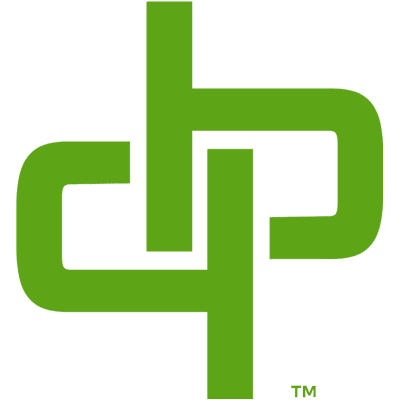In the rapidly evolving digital landscape, web design trends play a crucial role in shaping user experiences and driving online success. As we step into 2023, Fort Wayne businesses need to stay updated with the latest web design trends to stay ahead of the competition. This article serves as a comprehensive guide to help local businesses in Fort Wayne understand the key web design trends for 2023 and how they can leverage them to enhance their online presence, engage their target audience, and drive business growth.
At Digital Parameters, we specialize in web design, helping businesses in Fort Wayne and beyond create visually stunning and user-friendly websites that align with the latest trends. With our expertise and industry insights, we empower businesses to embrace the digital revolution and unlock their full potential in the online sphere. As the leading web design agency in Fort Wayne, we are dedicated to providing tailored solutions that propel businesses to new heights of success.
Throughout this article, we will explore the top web design trends that are expected to dominate the digital landscape in 2023. From responsive design and minimalist interfaces to voice user interfaces and AI integration, we will delve into each trend, highlighting its importance and sharing practical tips for implementation. By incorporating these trends into their web design strategies, Fort Wayne businesses can create captivating online experiences that captivate their audience and drive meaningful results.
Stay tuned as we take a deep dive into the fascinating world of web design trends and equip Fort Wayne businesses with the knowledge and tools they need to stay ahead in the digital era. Let’s embark on this exciting journey together and unlock the potential of web design to transform your online presence.
Current Web Design Trends
In the rapidly evolving digital landscape, staying updated with the latest web design trends is crucial for Fort Wayne businesses to maintain a competitive edge. By embracing these trends, businesses can create visually stunning and user-friendly websites that leave a lasting impression on their audience.
- Responsive Design: Responsive design has become a cornerstone of modern web development. With the increasing use of mobile devices, it is essential for websites to seamlessly adapt to different screen sizes and resolutions. Implementing responsive design ensures an optimal browsing experience for users across all devices.
- Minimalist Design: The minimalist design approach has gained significant traction in recent years. By simplifying layouts, removing unnecessary clutter, and focusing on essential elements, businesses can create clean and visually appealing websites. This design style not only enhances user experience but also improves website performance and loading times.
- Microinteractions: Microinteractions refer to subtle, interactive elements that engage users and enhance their experience. These can include button animations, hover effects, or progress indicators. Incorporating well-designed micro-interactions adds an extra layer of interactivity and delight, making the website more engaging and intuitive.
- Dark Mode: Dark mode has emerged as a popular web design trend, offering an alternative color scheme that displays content on a dark background. Besides providing a modern and sleek aesthetic, dark mode reduces eye strain and enhances readability, particularly in low-light environments. Integrating dark mode as an option can cater to users’ preferences and elevate the overall user experience.
- Immersive Visuals: The use of immersive visuals, such as videos, animations, and parallax scrolling, has become increasingly prevalent in web design. These elements help businesses convey their brand story, captivate visitors’ attention, and create a memorable browsing experience. Incorporating rich media into web design can effectively engage users and differentiate a website from competitors.
Staying up-to-date with current web design trends is vital for Fort Wayne businesses looking to create impactful online experiences. By embracing responsive design, minimalist aesthetics, micro-interactions, dark mode, and immersive visuals, businesses can ensure their websites resonate with their audience and drive meaningful engagement. Incorporating these trends will not only enhance user experience but also position businesses as forward-thinking and innovative in the digital realm.
User-Centric Design Approach
Designing a website solely based on current trends may not always guarantee the best user experience. It is essential to adopt a user-centric design approach that focuses on meeting the needs and expectations of the target audience. By understanding user behavior and preferences, businesses can create websites that are intuitive, accessible, and optimized for conversions.
- User Research: Conducting thorough user research is the foundation of user-centric design. By gathering insights into the target audience’s demographics, behaviors, and preferences, businesses can tailor their website design to meet their specific needs. User research methods such as surveys, interviews, and usability testing provide valuable data for informed decision-making.
- Intuitive Navigation: A seamless and intuitive navigation structure is key to helping users find the information they need quickly and easily. Implementing clear menus, logical page hierarchies, and prominent search functionalities ensures that users can navigate the website effortlessly. Intuitive navigation enhances user satisfaction and encourages prolonged engagement.
- Clear Call-to-Actions: Well-designed and strategically placed call-to-action (CTA) buttons guide users toward desired actions, such as making a purchase or submitting a contact form. CTAs should be visually distinct, use compelling copy, and provide clear instructions. A user-centric design approach ensures that CTAs are strategically positioned throughout the website to maximize conversions.
- Accessibility: Web accessibility is crucial to ensure that all users, including those with disabilities, can access and navigate the website effectively. Design considerations such as providing alternative text for images, using proper color contrasts, and implementing keyboard-friendly navigation contribute to an inclusive and accessible website experience.
- Performance Optimization: Optimizing website performance is vital for delivering a seamless user experience. Slow loading times and sluggish responsiveness can frustrate users and lead to high bounce rates. Businesses should prioritize optimizing page speed, minimizing file sizes, and leveraging caching techniques to provide users with fast and responsive website experiences.
By prioritizing user needs, preferences, and accessibility, businesses can create websites that engage users, drive conversions, and establish long-term relationships. A user-centric design approach not only ensures a positive user experience but also fosters trust, credibility, and customer satisfaction.
Mobile-First Design
In today’s digital landscape, having a mobile-friendly website is no longer a luxury but a necessity. With the majority of users accessing the internet through mobile devices, businesses must adopt a mobile-first design approach to provide seamless experiences across different screen sizes and devices.
- Responsive Design: Responsive design ensures that websites adapt and respond to the user’s device, whether it’s a desktop, tablet, or smartphone. By utilizing flexible layouts, fluid grids, and media queries, businesses can create websites that automatically adjust their appearance and functionality to provide optimal viewing experiences.
- Mobile Optimization: Mobile optimization goes beyond responsive design and focuses on tailoring the website experience specifically for mobile users. It involves optimizing page load times, simplifying navigation, and optimizing form input fields for smaller screens. Mobile-optimized websites prioritize content visibility, touch-friendly interactions, and streamlined user flows.
- Thumb-Friendly Navigation: Mobile users primarily navigate websites using their thumbs, making it crucial to design for thumb-friendly interactions. Placing important elements within easy reach of the thumb and designing navigation menus that can be easily tapped with a thumb ensures a smooth and intuitive browsing experience.
- Content Prioritization: On mobile devices, screen real estate is limited, and users have shorter attention spans. Therefore, it is essential to prioritize and streamline content for mobile users. Businesses should focus on concise and scannable copy, use bullet points or numbered lists, and leverage visuals to convey information effectively.
- Mobile SEO: Mobile optimization is not just about design and functionality; it also impacts search engine optimization (SEO). Search engines like Google prioritize mobile-friendly websites in their rankings, making it crucial for businesses to optimize their mobile presence for better visibility and organic traffic.
By adopting a mobile-first design approach, businesses can ensure that their websites provide seamless and engaging experiences for mobile users. Prioritizing mobile optimization enhances user satisfaction, increases conversions, and boosts search engine rankings. As mobile usage continues to rise, embracing mobile-first design is essential for staying ahead of the competition and meeting the evolving needs of users.
Engaging Visuals and Multimedia
In the digital age, visuals play a crucial role in capturing users’ attention and conveying information effectively. Incorporating engaging visuals and multimedia elements into web design can significantly enhance user experiences and make your website more memorable. Here are key considerations for using visuals and multimedia in web design:
- High-Quality Images: Utilize high-quality, relevant images that resonate with your brand and content. Images should be visually appealing, optimized for web performance, and properly sized for quick loading times. High-resolution images enhance the overall aesthetics of your website and leave a lasting impression on visitors.
- Infographics and Data Visualizations: Infographics and data visualizations are effective ways to present complex information in a visually appealing and easily digestible format. Use charts, graphs, and illustrations to showcase statistics, research findings, or comparisons, making it easier for users to understand and retain information.
- Videos and Animations: Videos and animations are powerful storytelling tools that can engage users and communicate messages effectively. Incorporate videos that demonstrate product features, showcase client testimonials, or provide educational content. Use animations to add interactivity and visual interest to your website, enhancing user engagement.
- Sliders and Carousels: Sliders and carousels allow you to display multiple images or messages within a confined space, providing a dynamic and interactive experience. Use them strategically to highlight key offerings, promotions, or testimonials, keeping users engaged and encouraging them to explore further.
- User-Generated Content: Leverage user-generated content (UGC) to enhance credibility and foster a sense of community. Incorporate customer reviews, testimonials, or social media feeds to showcase real experiences and build trust with your audience. UGC not only adds authenticity but also encourages user participation and engagement.
- Visual Hierarchy: Establish a visual hierarchy to guide users’ attention and emphasize key information. Utilize contrasting colors, typography, and spacing to create a clear and intuitive visual structure. Highlight important elements, such as call-to-action buttons or key messages, to ensure they stand out and drive user interaction.
By integrating engaging visuals and multimedia elements into your web design, you can create a captivating and immersive user experience. Remember to align visuals with your brand identity and content strategy to convey your unique value proposition effectively. Well-crafted visuals not only enhance the aesthetics of your website but also contribute to higher user engagement, increased conversions, and improved overall user satisfaction.
Visual Storytelling and Engaging Content
In today’s digital landscape, captivating visuals and engaging content play a vital role in capturing users’ attention and conveying your brand’s message effectively. Incorporating visual storytelling elements into your web design can significantly enhance user engagement and leave a lasting impression. Here are some key strategies to leverage visual storytelling and create engaging content:
- Compelling Imagery: Integrate high-quality and relevant images that resonate with your brand and target audience. Use visually striking photographs, graphics, and illustrations to communicate your message effectively. Images can evoke emotions, convey information, and enhance the overall visual appeal of your website.
- Infographics and Data Visualization: Present complex information or statistics in a visually appealing and easy-to-understand format through infographics and data visualizations. Use charts, graphs, and diagrams to simplify data and enhance user comprehension. Infographics can be shared and referenced, increasing your content’s reach and visibility.
- Video Content: Incorporate video content to engage users and provide dynamic storytelling. Videos can showcase products or services, provide tutorials or demonstrations, or share customer testimonials. They have the power to convey emotions, showcase brand personality, and deliver impactful messages in a concise and engaging manner.
- Storytelling through Typography: Utilize creative typography to enhance your website’s storytelling. Experiment with different fonts, sizes, and styles to reflect your brand’s personality and reinforce your message. Typography can be a powerful visual element that captures attention and guides users through your content.
- User-Generated Content: Encourage users to contribute content such as reviews, testimonials, or user-generated visuals. User-generated content adds authenticity and builds trust with your audience. Displaying customer experiences and stories can create a sense of community and engagement, fostering a connection with potential customers.
- Interactive Elements: Incorporate interactive elements to actively engage users. This can include quizzes, polls, sliders, or interactive timelines. Interactive features encourage user participation, making the browsing experience more enjoyable and memorable. They also provide valuable insights and data about user preferences and interests.
- Emotional Appeal: Tap into emotions to create a deeper connection with your audience. Craft compelling narratives that evoke emotions and resonate with your target demographic. Whether it’s through heartfelt stories, relatable experiences, or inspirational messages, an emotional appeal can foster a strong bond between your brand and your audience.
Remember, visual storytelling and engaging content are not limited to just images and videos. It’s about using various visual and interactive elements strategically to create a cohesive and immersive experience. By incorporating these techniques, you can capture users’ attention, communicate your brand’s story effectively, and foster deeper engagement with your audience.
Accessibility in Web Design
Ensuring that your website is accessible to all users is not just a moral obligation but also a legal requirement. Accessibility in web design refers to creating websites that can be easily navigated and understood by people with disabilities. By implementing accessible design practices, you can provide an inclusive browsing experience that benefits all users.
- Importance of Accessibility: Accessibility is about making your website usable for people with disabilities, such as visual, auditory, cognitive, or motor impairments. It allows them to access and interact with your content effectively. Moreover, an accessible website enhances the user experience for everyone, including those using assistive technologies or facing temporary limitations.
- Key Considerations for Accessible Design:
- Clear and concise content: Use plain language and organize information in a logical manner, making it easier for all users to understand.
- Proper heading structure: Use heading tags (H1, H2, etc.) to create a hierarchical structure that assists screen readers and improves navigation.
- Alternative text for images: Include descriptive alt text for images, allowing visually impaired users to understand their context.
- Color contrast: Ensure sufficient color contrast between text and background for readability, benefiting users with visual impairments.
- Keyboard accessibility: Ensure all interactive elements are operable via keyboard, enabling users who cannot use a mouse to navigate your site.
- Benefits of Accessible Design:
- Reach a wider audience: By making your website accessible, you open doors to a broader range of users, including those with disabilities.
- Improved SEO: Search engines prioritize accessible websites, as they provide a better user experience for all visitors.
- Enhanced usability: Accessibility features often contribute to a more user-friendly interface, benefiting all users, regardless of ability.
- Compliance with legal requirements: Many countries have laws in place that require websites to be accessible, ensuring equal access for all individuals.
- Tools and Resources: There are various tools and resources available to assist web designers in creating accessible websites. These include accessibility evaluation tools, guidelines from organizations like the W3C, and accessibility experts who can provide valuable insights and assistance.
By incorporating accessibility principles into your web design process, you not only meet legal obligations but also create an inclusive online environment that welcomes and accommodates all users.
Conversion Rate Optimization (CRO)
Conversion Rate Optimization (CRO) is a crucial aspect of digital marketing that aims to maximize the percentage of website visitors who take the desired actions, ultimately improving the overall effectiveness of your online presence. By analyzing user behavior, making data-driven adjustments, and implementing proven strategies, you can optimize your website’s conversion rates and achieve better results.
- Understanding Conversion Rate Optimization: Conversion Rate Optimization involves a systematic approach to improving the conversion rates of your website. It goes beyond driving traffic and focuses on converting that traffic into leads, customers, or subscribers. CRO involves various techniques, including analyzing user behavior, conducting A/B testing, optimizing landing pages, and improving the overall user experience.
- Analyzing User Behavior: Understanding how users interact with your website is crucial for optimizing conversion rates. Tools like Google Analytics provide valuable insights into user behavior, including click patterns, bounce rates, and conversion funnels. By identifying potential bottlenecks or areas of improvement, you can make data-driven decisions to enhance your website’s performance.
- A/B Testing and Experimentation: A/B testing involves comparing two or more variations of a web page to determine which performs better in terms of conversions. By testing different elements such as headlines, calls to action, layouts, or colors, you can gather insights and make informed decisions based on actual user responses. Continual testing and experimentation allow you to refine your website and achieve better conversion rates over time.
- Optimizing Landing Pages: Landing pages play a critical role in driving conversions. By optimizing your landing pages, you can create a compelling user experience that encourages visitors to take action. Elements to consider include clear and concise messaging, persuasive copywriting, engaging visuals, prominent call-to-action buttons, and streamlined form submissions.
- Enhancing User Experience: A positive user experience is closely linked to higher conversion rates. Focus on improving website navigation, load times, mobile responsiveness, and overall usability. Implementing intuitive design, providing clear value propositions, and reducing friction points can significantly impact user engagement and conversion rates.
- Personalization and Targeted Messaging: Tailoring your messaging and offers to specific user segments can significantly improve conversion rates. Utilize data and analytics to understand your audience better, segment them based on demographics or behaviors, and deliver personalized experiences that resonate with their needs and preferences.
- Continual Monitoring and Optimization: Conversion Rate Optimization is an ongoing process. Continually monitor your website’s performance, analyze data, and make iterative improvements. Stay informed about industry trends, emerging technologies, and evolving customer preferences to ensure your website remains optimized for maximum conversions.
By implementing Conversion Rate Optimization strategies, you can enhance the effectiveness of your website, generate more leads, increase sales, and achieve a better return on investment (ROI) from your digital marketing efforts.
Conclusion
In the fast-paced digital landscape, staying ahead of web design trends is crucial for Fort Wayne businesses to maintain a competitive edge and engage their target audience effectively. By embracing the latest design practices, optimizing for user experience, and leveraging emerging technologies, businesses can create impactful online experiences that drive conversions and growth.
Throughout this article, we explored several key web design trends expected to dominate the digital landscape in 2023. From the rise of minimalistic designs and immersive storytelling to the integration of artificial intelligence and voice search optimization, businesses have an array of exciting opportunities to enhance their online presence.
Remember, the success of your web design efforts lies in understanding your target audience, aligning your design choices with your brand identity, and continually monitoring and optimizing your website’s performance. By prioritizing user experience, mobile responsiveness, and conversion rate optimization, you can create a website that not only captivates visitors but also drives tangible results for your business.
As a leading web design agency in Fort Wayne, Digital Parameters is committed to helping businesses navigate the ever-evolving digital landscape. Our team of skilled designers and developers stays up-to-date with the latest trends and best practices to deliver cutting-edge websites tailored to your unique needs.
If you’re ready to take your web presence to the next level and stay ahead of the competition, contact Digital Parameters today. Together, we can create a visually stunning and highly functional website that elevates your brand, engages your audience, and drives meaningful business growth.
Remember, your website is the digital face of your business. Embrace the trends, leverage innovative technologies, and adapt to the evolving needs of your target audience to ensure your web presence remains relevant, impactful, and future-proof.












